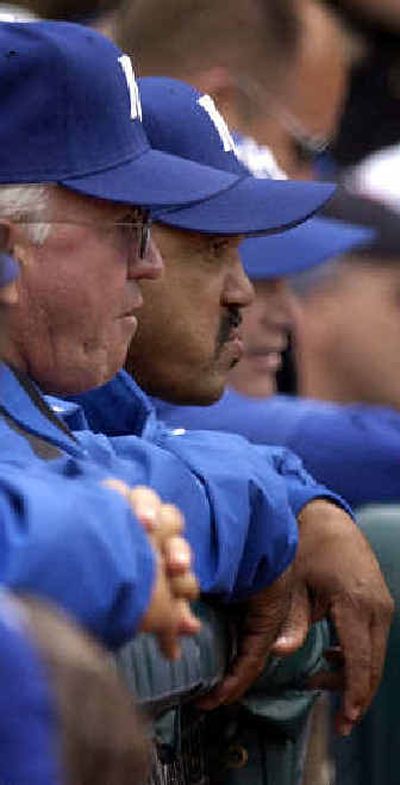A Royal bummer

KANSAS CITY, Mo. – Two teams, two small markets, one big difference.
The Minnesota Twins, threatened with contraction just three years ago, are coming off their third straight American League Central title – while the Kansas City Royal have one winning season in the past 10 years and have lost 100 or more games twice in the past three seasons.
So far this year, it’s more of the same. The Royals have the worst record in baseball (6-18) after 24 games and appear headed for another 100-loss season, while Minnesota is a favorite to contend for yet another division title.
As the Royals lost all three games in a series this week against the Twins, the fans at Kauffman Stadium got more reminders that the two teams remain at opposite ends of the small-market spectrum – and more chances to ask what Minnesota has figured out that Kansas City hasn’t.
Allard Baird, the Royals’ general manager, insists he feels their pain. But chronic losing, he said Wednesday, is a malady that only time and patience can cure because the Royals won’t spring for a quick shot of high-priced talent.
“Minnesota is the model organization for small markets,” Baird said by telephone from a scouting trip to Wichita, Kan. “That’s because they were allowed to have patience and go through the process.”
The Royals’ opening-day payroll was just less than $37 million, the second-lowest in the majors and $10 million lower than a year ago. Minnesota, which escaped contraction after the 2001 season, ranked 20th at $56.6 million.
But in 2002, when the Twins won the A.L. Central and the Royals finished 65-97, Kansas City outspent Minnesota $47.3 million to $40.2 million – and the Twins had lost 90 or more games in four of their five previous seasons.
The big factor, Twins general manager Terry Ryan said, was in developing young players, making smart trades and stressing fundamentals – the same things the Royals are trying to do now.
“You just have to stay the course, and it will pay off in the end,” Ryan said Tuesday from Rochester, N.Y., home of the Twins’ Triple-A club. “From ‘93 through 2000, we didn’t have a lot go right.”
Baird’s core strategy of going young and trying to bring players along at a uniform pace is the right one, Ryan said.
“I know Kansas City does things about the same way we do,” he said. “There are not too many secrets as to how you go about it.”
Some things clearly are out of the control of Baird and Royals manager Tony Pena. Injuries have forced the Royals to bring some players along more quickly than they might otherwise have – and in some cases, to start players whom Baird acknowledges should have been in the minors.
Since Pena became manager early in the 2002 season, 34 players have made their major league debuts with the Royals.
“That is a high number,” Baird said. “When you look at the timeline, some of those players were stopgap guys.”
All that change makes it hard to develop team chemistry, said veteran first baseman Mike Sweeney. But if the Royals had a winning chemistry all along, there wouldn’t have been so many roster changes.
“When you’re winning, there isn’t much change,” Sweeney said. “The core of your team – 21 or 22 guys – stays pretty much intact the whole year. When you’re losing, there’s a lot of shuffling going on. Guys get sent down, traded – and unfortunately, since Tony has taken over as manager, we haven’t played as well as we should have for him.”